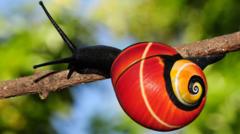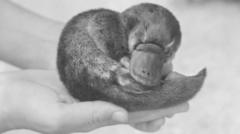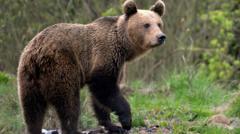The International Union for Conservation of Nature has classified giraffes into four species, including newly identified Southern, Reticulated, and Northern giraffes, following a study on genetic diversity and geographical separation. This classification aims to aid in the conservation efforts of the world's tallest mammal.
New Research Identifies Four Distinct Giraffe Species, Reassessing Conservation Needs

New Research Identifies Four Distinct Giraffe Species, Reassessing Conservation Needs
A groundbreaking study identifies three new giraffe species, emphasizing the importance of genetic diversity for conservation strategies.
Scientists at the International Union for Conservation of Nature (IUCN) have announced that there are now three additional species of giraffe recognized, expanding upon the longstanding belief that the iconic animal comprises a single species. This classification comes as a result of thorough scientific analysis that incorporates genetic assessment and geographical factors influencing their evolution.
Until now, discussions around multiple giraffe species had been speculated but lacked formal acknowledgment. Recent research examined variations in skull size and head shape among giraffe groups, determining that sufficient genetic diversity exists to justify classifying them as four distinct species. This finding underscores the importance of understanding evolutionary paths shaped by Africa’s diverse landscapes, which include deserts, rivers, and valleys.
The newly identified species consist of the Southern giraffe, Reticulated giraffe, and Northern giraffe. The Southern giraffe inhabits regions in southern Africa, including Angola, Botswana, Namibia, Zimbabwe, Zambia, and Mozambique. Naturally occurring barriers, such as the Kunene and Zambezi rivers, have historically isolated these giraffes, allowing for unique evolutionary traits.
Next, the Reticulated giraffe occupies open savannas in Kenya, Somalia, and Ethiopia, with the Tana River and Ethiopian highlands serving as significant geographical separations. This species is also migratory, potentially exposing it to other giraffe types during seasonal movements.
Finally, the Northern giraffe is primarily found in western Ethiopia and parts of Kenya, South Sudan, and Uganda, separated from overlapping giraffe populations by the Nile River and Lake Victoria.
The initial observation of a fourth species, the Masai giraffe, remains, distinguished by its unique leaf-patterned coat. It is found across Kenya, Tanzania, and Uganda, with similar geographical barriers isolating it from the Northern giraffe.
Michael Brown, co-author of the report, highlighted the critical nature of recognizing genetic differences as essential to giraffe conservation. While historically categorized as a single vulnerable species, the IUCN will now reassess the conservation status of the four distinct giraffe species, aiming to enhance protection measures for these gentle giants while acknowledging that some sub-species populations have been increasing.
This refined understanding of giraffe taxonomy is poised to improve conservation strategies, ensuring that each species is effectively managed in light of its unique characteristics. With these developments, scientists hope to bolster efforts to protect the majestic giraffe from extinction.




















